Timber Textures Reignite a Cultural Icon
Her Majesty's Theatre
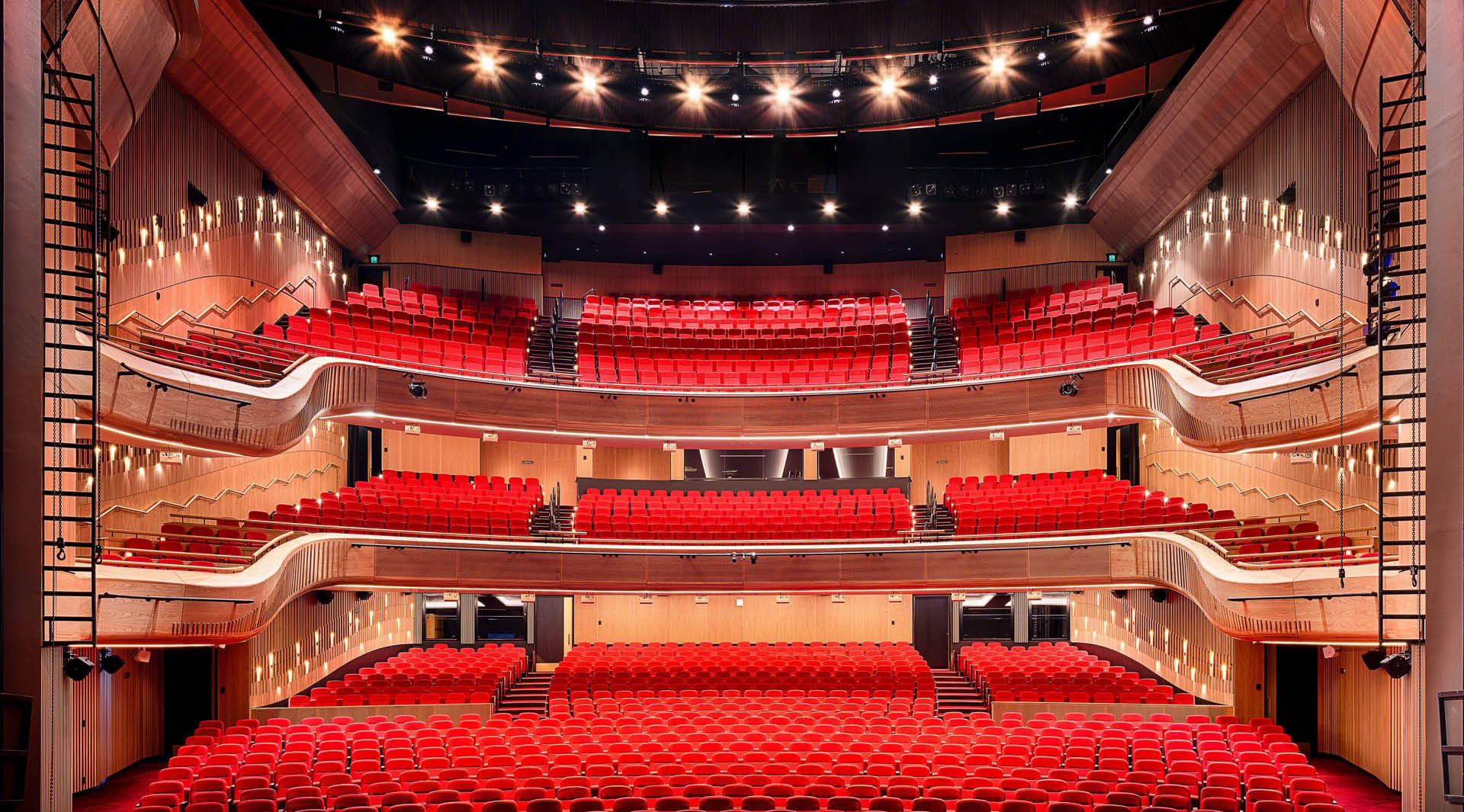
Initially constructed in 1913, Her Majesty’s Theatre, or ‘Her Maj’ as she is affectionately known, has housed much history within her walls and continues to hold a place in the hearts of local residents.
With a full redevelopment designed by Cox Architecture, we contacted Director, Zoë King, to get the full story on the design development.
Product
Click-on Battens
Materials
White Oak
Applications
Feature Walls
Feature Ceilings
Facades
Sector
Cultural
Architect
COX Architecture
Builder
Hansen Yuncken
Location
Adelaide
Completion Date
2020
Photographer
Chris Oaten
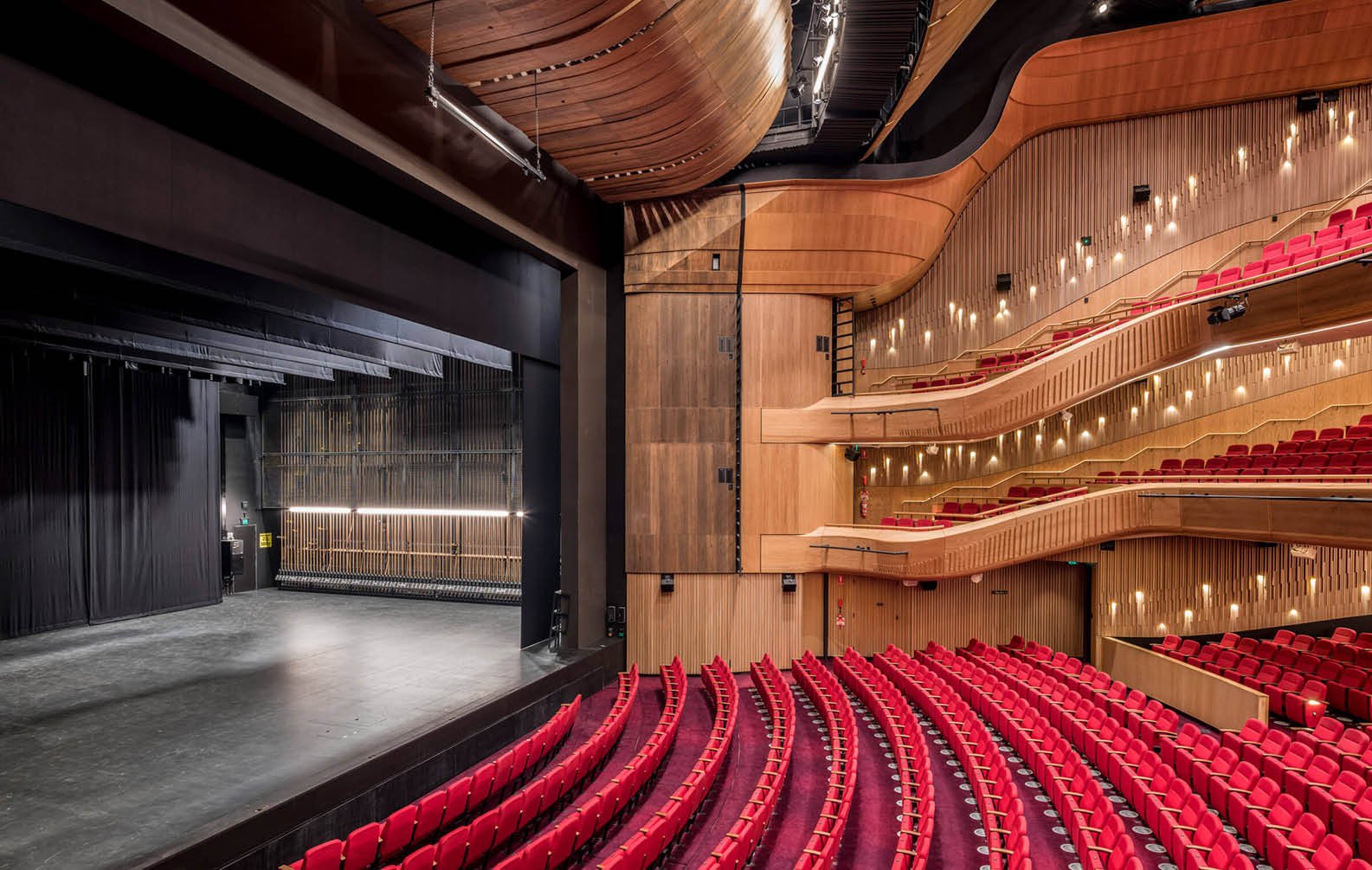
A New Legacy
After making it into the 21st century, the theatre merited a redevelopment. Preservation of the theatre’s historical integrity and beautiful detailing was necessary, and COX managed to integrate this with new contemporary inclusions to meet patron expectations.
The revamp includes three levels of bars as well as a variety of entertainment and exhibition spaces. A brief was developed, increasing capacity from 970 to 1,500, after thorough consultation with artists and the community.
A Word from Cox Architecture
Zoë King, who is Director of COX in the Adelaide studio, generously provided us with intriguing insight into the design of Her Majesty’s Theatre.
Zoë explained that before they imagine a design or pick up a pen to sketch an idea, they undertake a vast amount of research of the site and the history of the place. This research unveiled the original 1906 plans, sections, and a photo from the first show in 1913 from the stage, looking back to the seats. These elements became the inspiration and informed the contemporary design.
Cox’s primary role was to make Her Maj a viable venue for commercial touring shows and ensure the new design met the technical brief. From the outset, they aspired to design and deliver a new legacy for Her Maj.
These crafted textured surfaces, with integrated house lighting, bring an elevated level of quality to the space. Technical excellence was a prime design driver. As such, Sculptform's product allowed us to achieve the essential acoustic requirements for a viable theatre.

Zoë King
Director | Cox Archictecture
It was a treat to discover that the Adelaide Festival Centre had salvaged some of the heritage elements from the 1970's demolition, a pressed metal detail, and a skirting board, to name a few. Our approach to the contemporary design was to deconstruct these details. For instance, the pressed metal pattern informed the floor tile shape, and the 1913 wrought iron balcony fronts sort as the inspiration for a contemporary acoustic filigree.

Zoë King
Director | Cox Archictecture
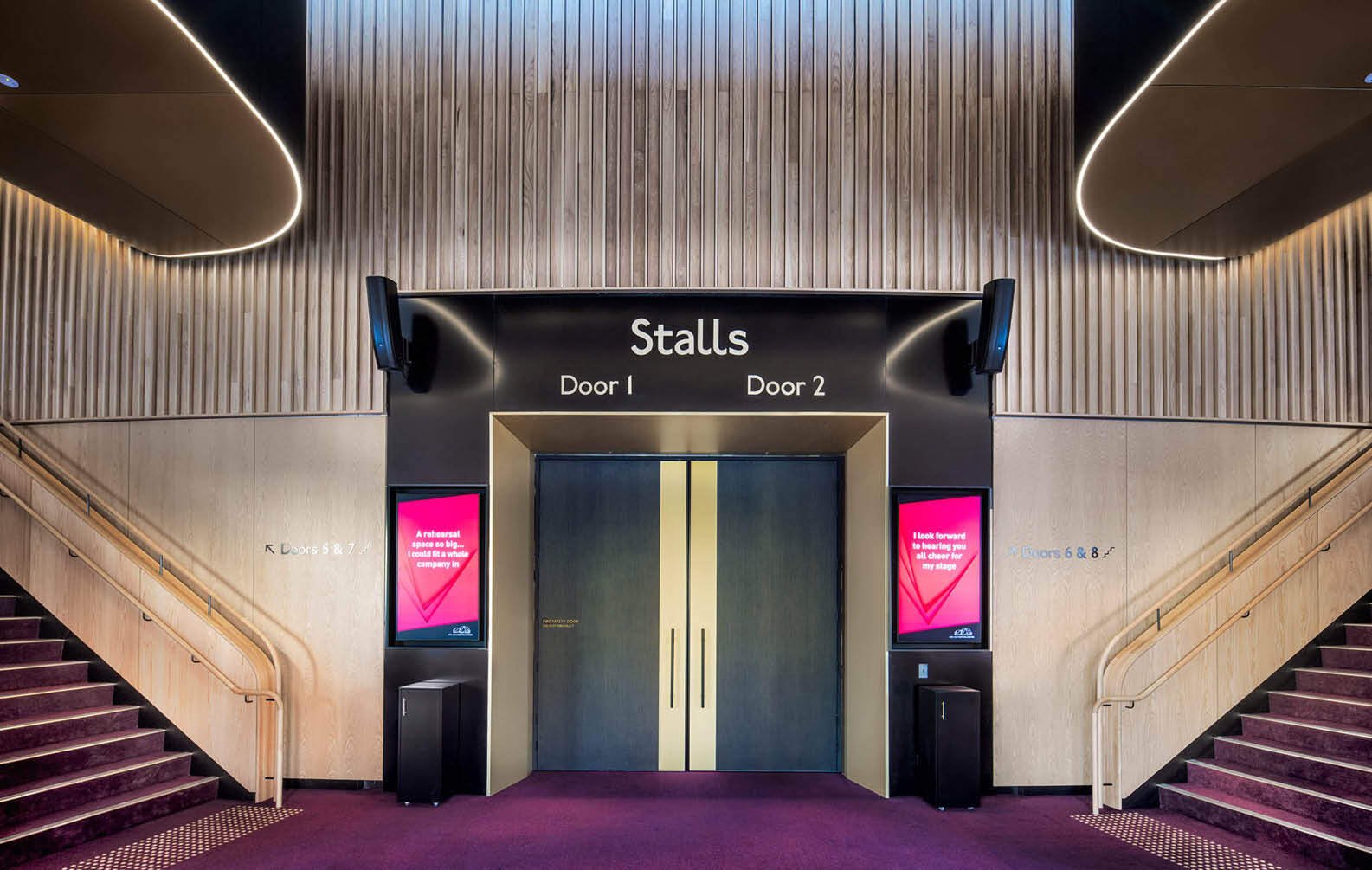
Why was Sculptform Chosen?
Faceted timber surfaces, including some complex curves, take centre stage within the architecture to create a sense of excitement and expectation preperformance. Zoë mentioned that Sculptform was the best product to achieve these complexities.
Cox also found the specifying process to be an easy experience paired with excellent customer service.
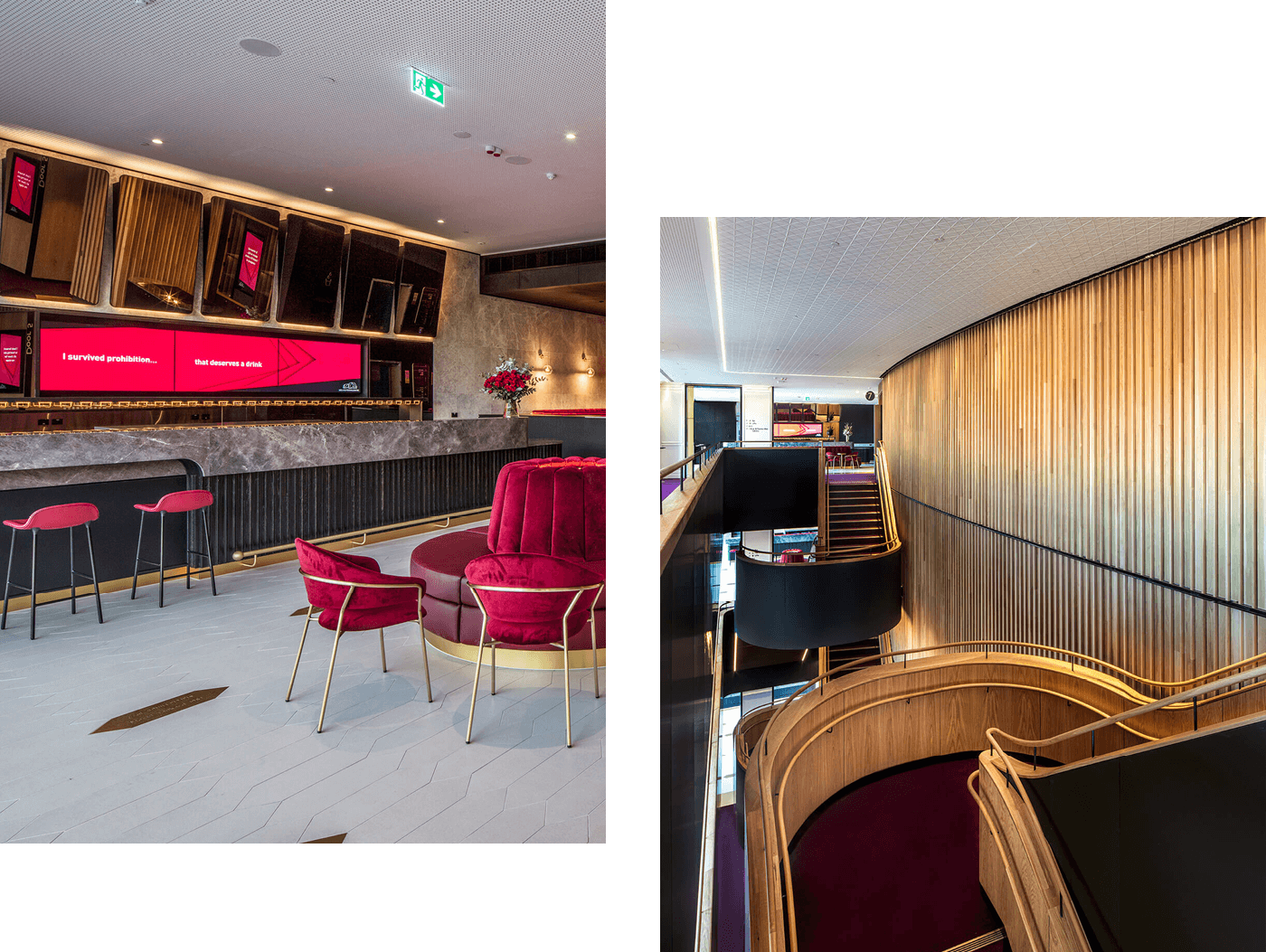
A Combination of Old and New
The resulting design allows the original elements to be expressed through a series of clear and refined principles around connecting to its history. At the same time, the new and more modern interpretations outline the way the theatre is now utilised.
In bringing the old and new together, Cox binds the eras through a shared approach to texture, warmth and openness. The new works ensure the interior feels cohesive and allows the old to flow effortlessly into the new.
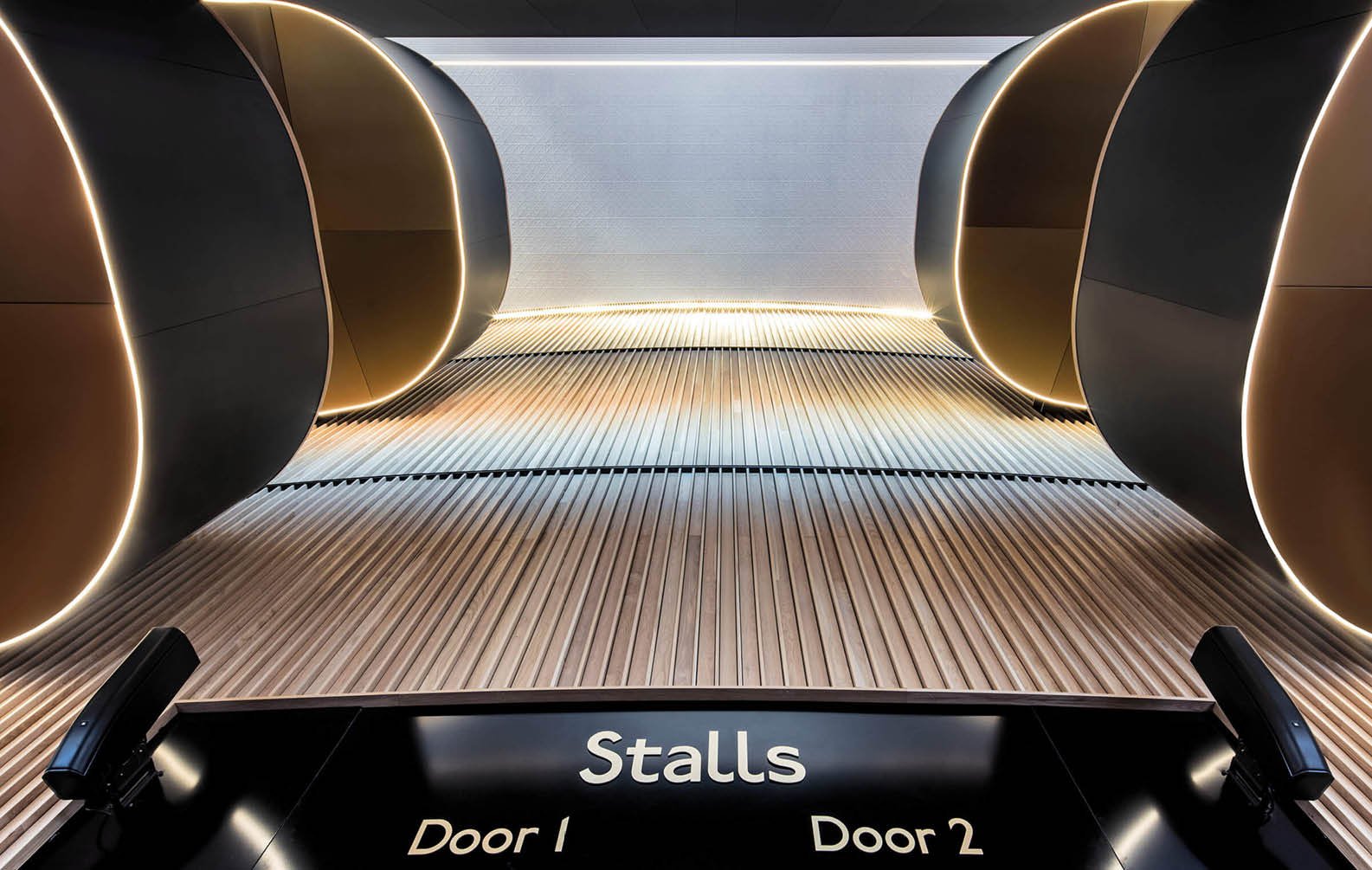
Custom Design
We devised a custom design with input from an acoustic technician to achieve the theatre’s intriguing wall design. The wall features Click-on Battens consisting of six altering depths to create a textural wall feature spanning the sides of the theatre. Battens with depths of 22mm, 32mm, 42mm, 60mm, 68 and 80mm were individually applied to the walls and supported by a curved ply substrate.
Starting from the top of the wall, we installed the battens downwards in a specific order to allow efficiency. It took a couple of months to complete the installation.
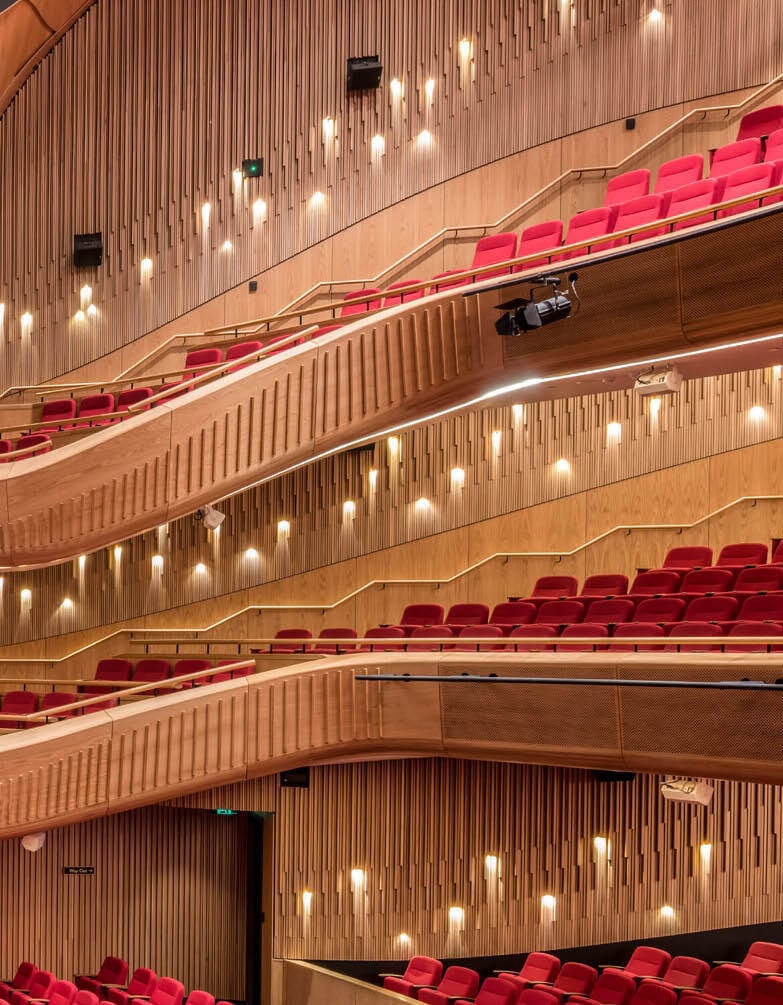

Download our Inspirational eBook
5 Beautiful and Impressive uses for Timber Battens
Product Specifications
Theatre Walls
Product
Click-on Battens
Material
Timber
Species
White Oak
Profile
Block, 19x60mm, 88x19mm
Spacing
5mm
Coating
Clear Oil
Track
Curved Ontrax
Acoustic Backing
Yes, 7mm thick
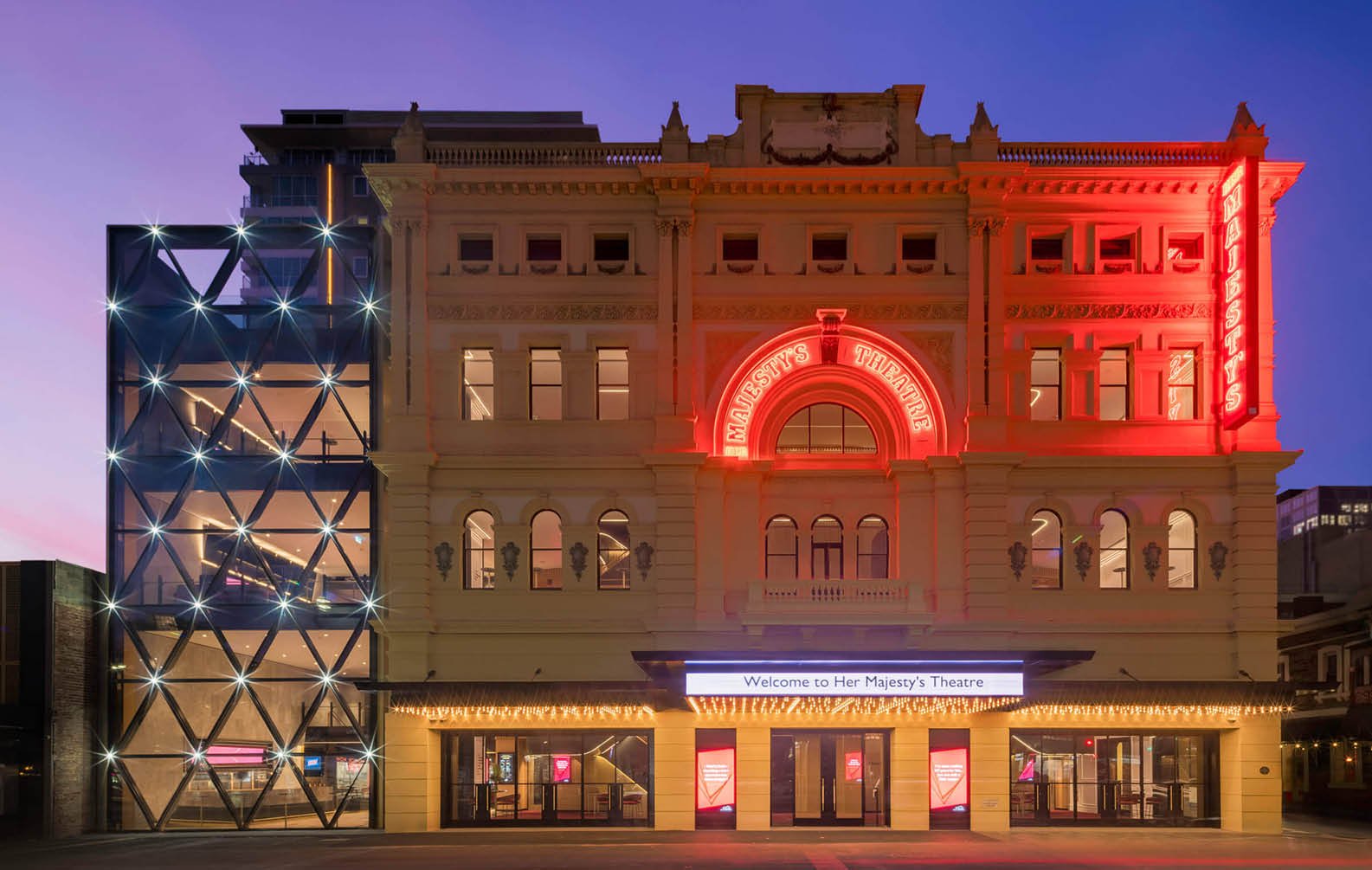
Related Projects




































































































































.webp?width=783&name=east-sydney-early-learning-centre_03%20(1).webp)


































































